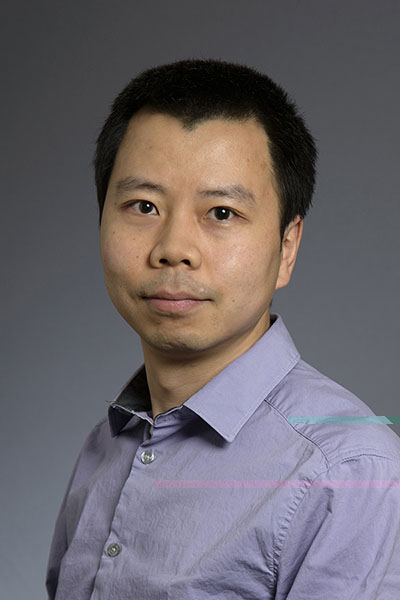
題目:Modeling andDistributed Optimization for 5G-enabledFog Computing Networks
基于5G的霧計算網絡建模與分布式優化
時間:9月18日, 10:30-11:30
地點:無線谷1402會議室
演講人:肖泳
摘要:Fog computing is a virtualized network architecture that uses one or a collaborative multitude of end-user clients or near-user edge devices to carry out a substantial amount of storage, communication, and control, configuration, measurement, and management. It can offload workload from cloud data centers, reduce the transmission latency, improve the system reliability, and ease traffic congestion of the Internet. It also enables many new services and applications that cannot fit well in the traditional cloud computing architecture. In this talk, I will first briefly introduce the recent developments in the mobile cloud and fog computing. I will then introduce two important performance metrics for fog computing networks: quality-of-experience (QoE) and power efficiency. A fundamental tradeoff between QoE and power efficiency will then be discussed. Motivated by the observation that the users’ QoE can be further improved if the workload offloading process of each fog node can be helped by others, I also talk about a fog computing framework with fog node cooperation. The QoE and power efficiency tradeoff under cooperative fog computing will be discussed. Recently, standardization bodies including 3GPP andETSI have included fog computing as the key component in 5G networks. We introduce a novel concept called dynamic network slicing for implementing fog computing into the 5G’s service-base architecture (SBA). In this concept, the limited computational resources can be sliced and reserved according to the traffic demands and Quality-of-Service (QoS) requirements of various supported services. We propose a stochastic overlapping coalition-formation game-based framework to investigate distributed cooperation and joint network slicing between fog nodes under randomly fluctuating resource availability, workload arrival processes, and QoS demands. Applications of 5G-enabled fog computing networks in the Tactile Internet and smart vehicular systems will be discussed. Finally, I will also talk about my current works on designing fog computing-enabled self-driving vehicular systems and security-enhanced mechanism for workload forwarding/redistribution in fog computing networks.
摘要:霧計算是一種虛拟化網絡架構,它通過一個或多個協作終端或靠近用戶的邊緣節點來執行存儲,通信,控制,配置,測量和管理等操作。霧計算網絡可以從雲數據中心卸載工作任務,從而減少傳輸延遲,提高系統可靠性,并減輕互聯網的流量擁塞。在本報告中,我将首先簡要回顧移動雲和霧計算的最新進展。然後,我将重點介紹霧計算網絡的兩個重要性能指标:用戶體驗質量(QoE)和霧節點的能效并讨論他們之間的基本平衡。我們發現如果每個霧節點的工作負載卸載過程可以得到附近其他節點的幫助,則可以進一步改善用戶的QoE。此外,我們還探讨了協作霧計算框架并進一步探讨協作霧計算下的QoE和能效的平衡。最近,包括3GPP和ETSI在内的标準化機構已經将霧計算納為5G網絡中的關鍵組成部分。因此,我們引入了動态網絡切片的概念,用于在5G的服務基礎架構(SBA)中動态實現霧計算網絡的資源分配。在動态網絡切片中,網絡運營商可以根據各種支持服務的流量需求和服務質量要求來進行切片和分配有限的計算資源。我們提出了一個重疊聯盟形成的博弈框架,研究在可用資源随機波動情況下,霧節點之間的分布式協作和聯合網絡切片情況。我将介紹具有5G功能的霧計算網絡在觸覺互聯網和智能車載系統中的應用。最後,我還将簡單介紹我近期在基于邊緣計算的無人駕駛車和霧計算網絡安全機制設計等方面的研究工作。
報告人簡介:
肖泳目前是華中科技大學電子信息與通信學院教授、博士生導師、國家“青年千人”、5G聯創行業應用開發實驗室副主任。于2006年和2012年分别在香港科技大學和新加坡南洋理工大學獲得碩士和博士學位。博士畢業後曾在南洋理工大學、愛爾蘭聖三一學院、美國休斯頓大學和美國麻省理工學院等歐美名校從事博士後研究工作。2016年9月到2018年8月在亞利桑那大學擔任研究助理教授,同時兼任美國自然科學基金NSF大學與工業聯合研究計劃資助的大型研究中心Center Manager。曾主持兩項美國自然科學基金與工業界聯合資助項目。在國際頂級期刊和會議發表論文超過60篇。他目前是CCF A類推薦期刊IEEE Transactions on Mobile Computing的編委會成員,并擔任超過20多個專業主流期刊和會議的技術委員會成員。他是IEEE資深會員。他的研究興趣包括無線通信、雲/霧/邊緣計算、機器學習、5G通信技術等。其他更多信息請參見他的個人主頁:http://eic.hust.edu.cn/professor/xiaoyong/

